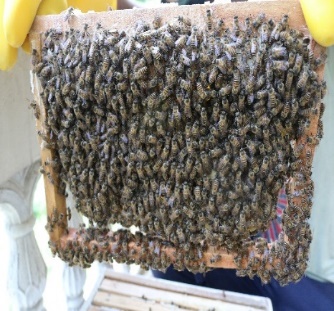Conservation and Management of traditional beekeeping (Apiscerena) practices through development of honeybee based sustainable livelihood chain in Kullu valley, Himachal Pradesh
Honey bees have served humanity for centuries, and beekeeping remains one of the most traditional and ecologically significant practices in India, deeply interwoven with the livelihood strategies of rural and tribal communities. Indigenous knowledge, defined as the cumulative body of wisdom and practices developed by people about their local environment, finds a vivid expression in beekeeping traditions, particularly in the Indian Himalayan Region. Among the different honey bee species, Apis cerana holds a special place as part of the natural heritage of hilly communities, valued not only for its gentle temperament and industrious nature but also for its remarkable adaptability to the ecological conditions of South and Southeast Asia. In Himachal Pradesh, particularly in Kullu district, Apis cerana is reared in traditional wall hives, locally called Madhi or Madham, which are constructed in different sizes, dimensions, and designs, reflecting a rich legacy of ancient knowledge and techniques passed down across generations. These hives represent cultural relics of honey harvesting, illustrating how mountain farmers integrated beekeeping into their daily lives through low-cost, resource-efficient methods that required minimal external inputs. Unlike modern beekeeping with exotic species, beekeeping with Apis cerana does not demand intensive management such as sugar feeding, migratory practices, or heavy disease control measures, making it particularly well-suited to isolated farming communities that continue to rely primarily on their indigenous knowledge base. The practice is inherently environment-friendly, contributing to both biodiversity conservation and livelihood generation, while also strengthening the social and cultural identity of local communities.
The Indian Himalayan Region, with its immense diversity of bee flora and favorable agro-climatic conditions, offers enormous potential for expanding beekeeping, especially in remote areas where the absence of chemical farming presents an opportunity to produce organic honey of high quality. This potential is especially significant given the dual role of native honeybees in providing income through honey and wax production while simultaneously ensuring pollination services for cash crops, fruits, and vegetables, which directly enhances agricultural productivity and food security. For small and marginal farmers, as well as landless households, beekeeping emerges as an ideal supplementary occupation requiring low capital investment but offering high ecological and economic returns, aligning perfectly with the principles of sustainable mountain development. Realizing the multiple benefits of promoting native honeybees, particularly Apis cerana, both for pollination management and honey production, a comprehensive study and intervention program was carried out in Kullu district. The initiative focused on conserving indigenous beekeeping traditions while simultaneously integrating modern scientific techniques to enhance productivity, quality, and market access. A total of 150 master beekeepers were trained in various aspects of sustainable beekeeping, covering topics such as hive management, colony division, disease prevention, and honey harvesting, while emphasizing the need to preserve and propagate the native bee species.
To facilitate adoption, each trained participant was provided with one active hive at a 70% subsidy along with minor equipment such as veils, gloves, cutters, queen cages, and smokers, while major equipment like honey harvesting machines was distributed among groups for collective use. In addition, the identification and plantation of native bee flora was carried out in project sites to enhance forage availability and improve colony productivity. Product quality testing and marketing linkages were established, and for interested beekeepers credit facilitation was arranged to help them scale their enterprises. The project also emphasized the ecological role of pollinators by training farmers on the significance of bees in crop pollination and income diversification. Value-added products such as honey and beeswax-based lip balm were developed and successfully marketed through Kisan Melas, Dushehra fairs, and local agencies, resulting in the sale of over 300 kilograms of honey and 1,000 lip balms, generating an income of approximately ₹2.80 lakhs during the project period. These efforts not only enhanced household incomes but also strengthened entrepreneurial skills, promoted community-based enterprises, and demonstrated the potential of beekeeping as an emerging livelihood option in the Himalayan region. At the same time, the project ensured the conservation of Apis cerana in its natural habitat, highlighting the dual benefits of biodiversity conservation and sustainable rural development. The G.B. Pant National Institute of Himalayan Environment, Himachal Regional Centre, was honored at the NABARD State Credit Seminar held in Shimla on 9th February 2022, receiving an award under the Agriculture Sectors Promotion Fund (PIA) for its outstanding work





